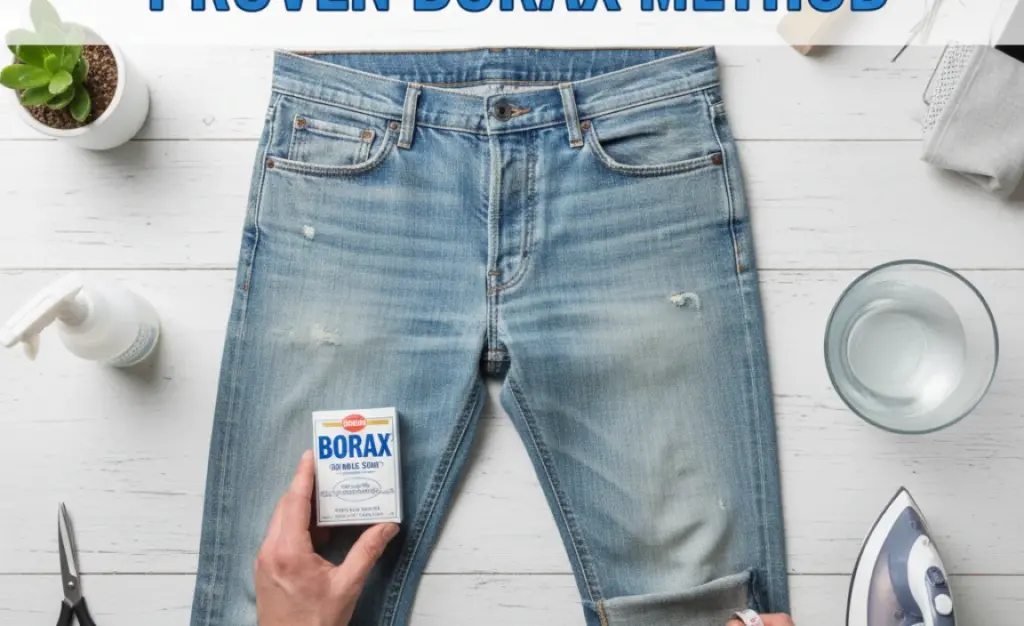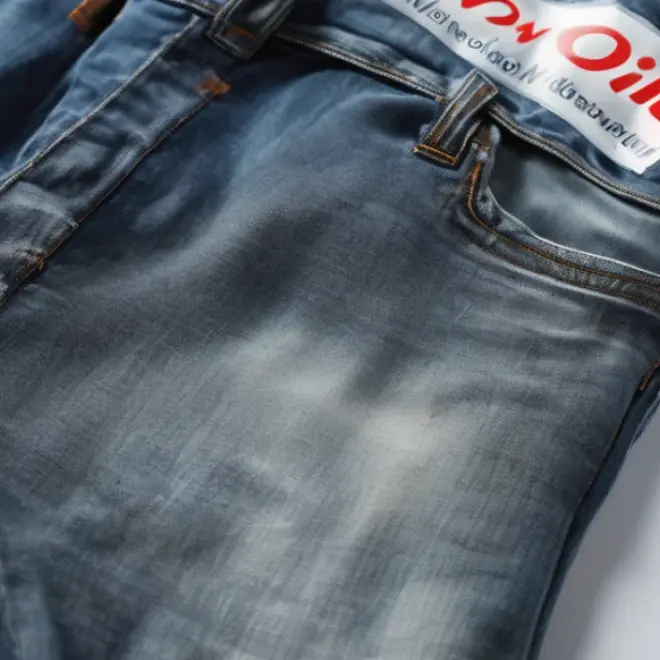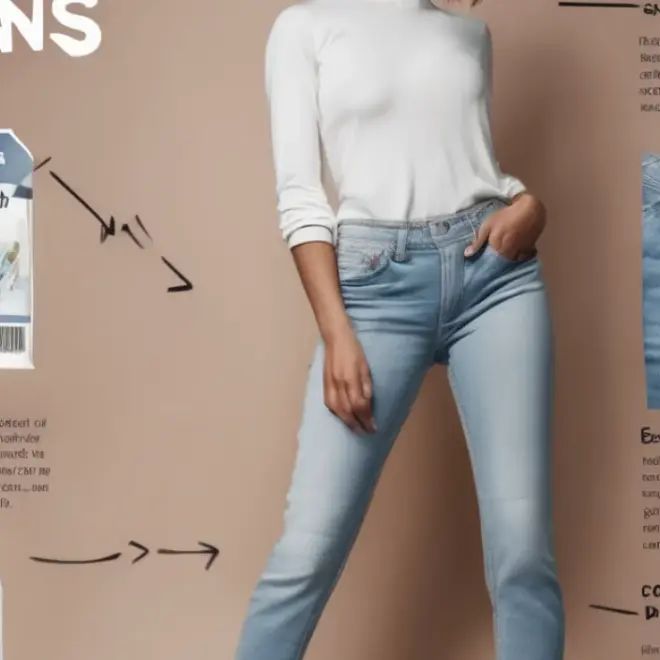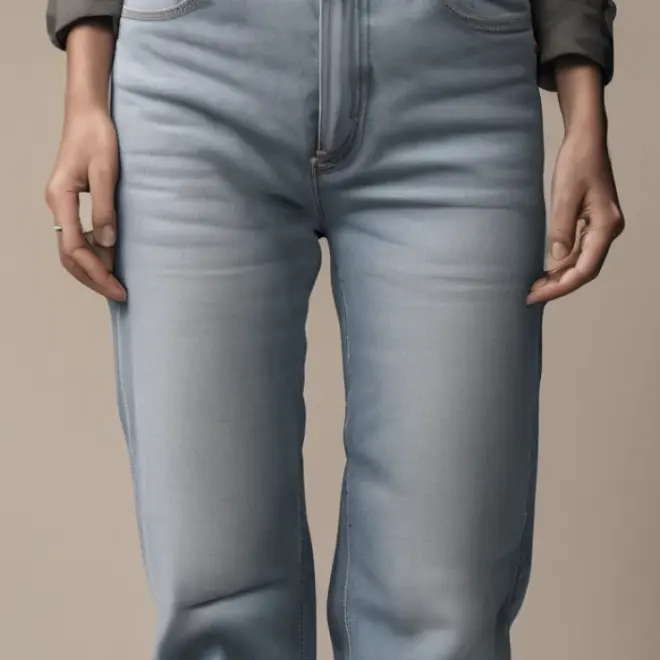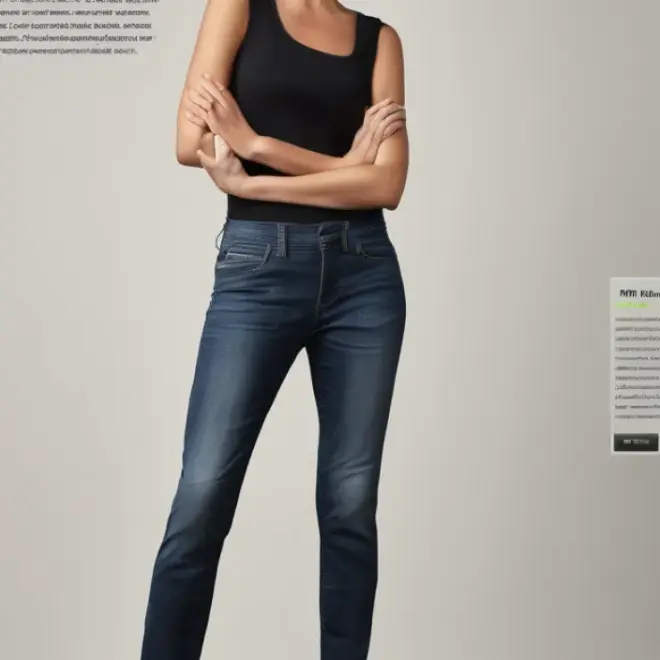Discover the easy “Borax Method” to perfectly hem your dad jeans at home, giving you a custom fit without a tailor. This straightforward guide ensures a sharp, professional finish, making your favorite jeans look and feel brand new.
Dad jeans. We love them for their relaxed fit and stylishly retro vibe, but they often come a little too long. Walking around with your cuffs dragging on the ground isn’t just a tripping hazard; it can make your whole outfit look unkempt. Thankfully, you don’t need to be a sewing expert or spend a fortune at the tailor’s. We’re going to walk through a simple, effective method using a common household ingredient that can help set your hemming stitch for a durable, professional finish. Let’s get those jeans fitting just right.
Understanding Dad Jeans and the Importance of a Good Hem
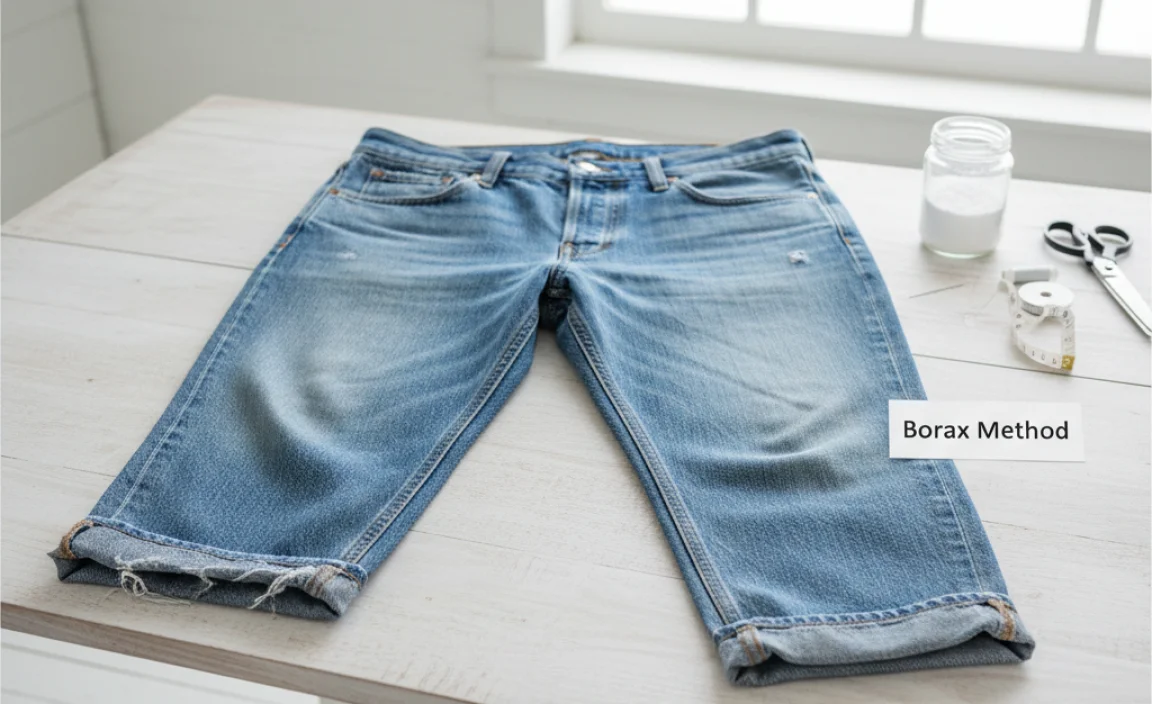
Dad jeans, a staple in many wardrobes, are characterized by their looser fit through the seat and thigh, often with a straight or slightly tapered leg. They offer comfort and a laid-back aesthetic. However, their generous cut can mean they overwhelm your frame if the length isn’t quite right. A proper hem not only adjusts the length to your desired look but also prevents fraying and provides a clean finish. It’s a crucial detail that can elevate the entire appearance of your jeans, making them feel custom-made.
Why the “Borax Method” for Hemming Jeans?
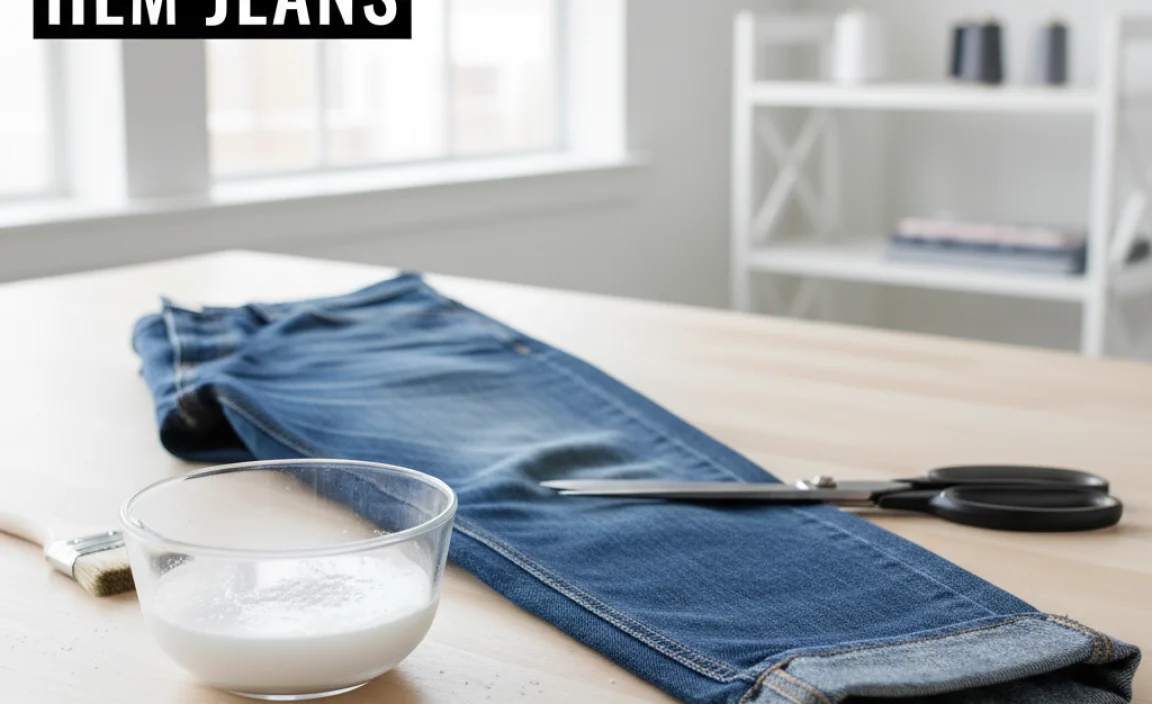
You might be wondering, “Borax? For hemming?” The “Borax Method” isn’t about using Borax as a primary stitching material, but rather as a pre-treatment solution. Historically, Borax (sodium tetraborate) has been used in various household applications, including laundry and cleaning, due to its ability to soften water and act as a mild alkali which can help to set certain dyes and fabrics. In the context of hemming jeans, a Borax soak can help prepare the denim fibers, potentially aiding in a cleaner fold and a crisper crease line before you even stitch. It’s a simple, accessible step that can contribute to a more polished final result. Think of it as a way to give your denim a little “prep talk” before its final fitting. For more on the properties of Borax, you can refer to resources like the U.S. Environmental Protection Agency’s information on borates.
Essential Tools and Materials You’ll Need
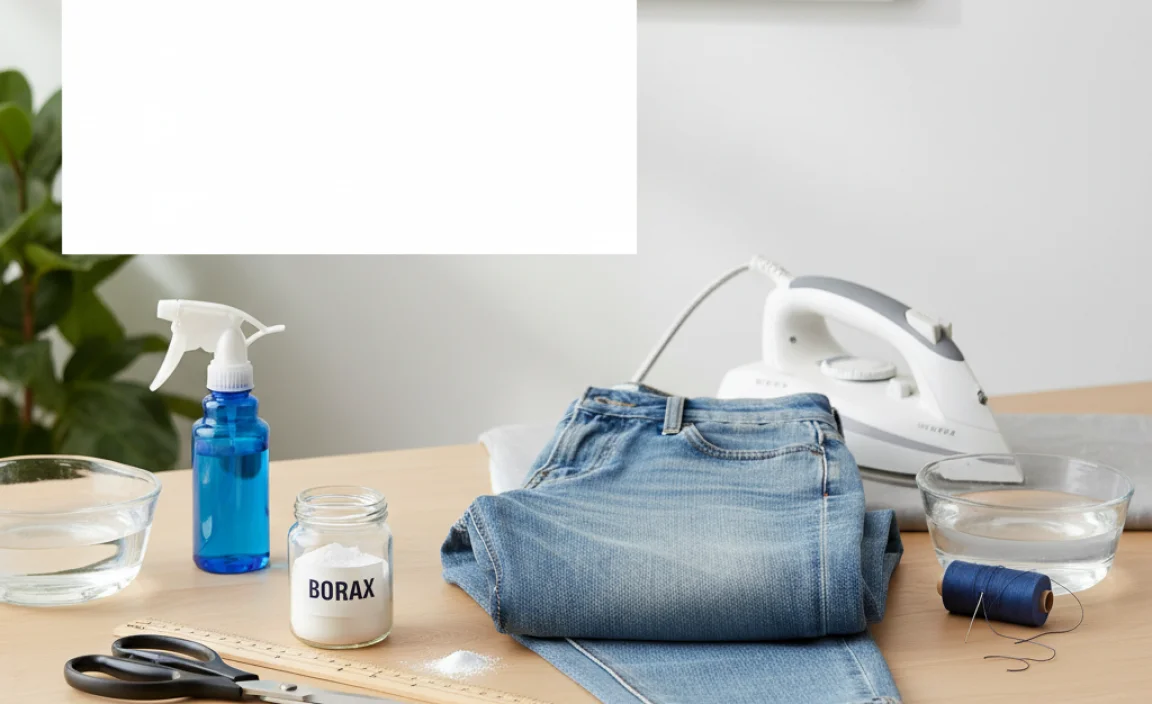
Gathering the right tools makes any DIY project smoother. For hemming your dad jeans using the Borax method, you’ll need the following:
- Your Dad Jeans: The star of the show!
- Borax: A small amount for your pre-soak. You can usually find this in the laundry aisle of most supermarkets.
- Measuring Tape or Ruler: For precise measurements.
- Fabric Chalk or a Fine-Tip Marker: To mark your hemline.
- Sharp Fabric Scissors: For a clean cut.
- Pins: To hold the hem in place while you work.
- Iron and Ironing Board: Essential for crisp creases.
- Sewing Machine (Recommended) or Needle and Thread: For stitching the hem. A sewing machine will give the most durable and professional finish.
- Thread: Choose a color that matches your jeans, or opt for a contrasting color for a visible stitch detail.
- Washing Basin or Sink: For the Borax soak.
Step-by-Step Guide: How to Hem Dad Jeans with the Borax Method
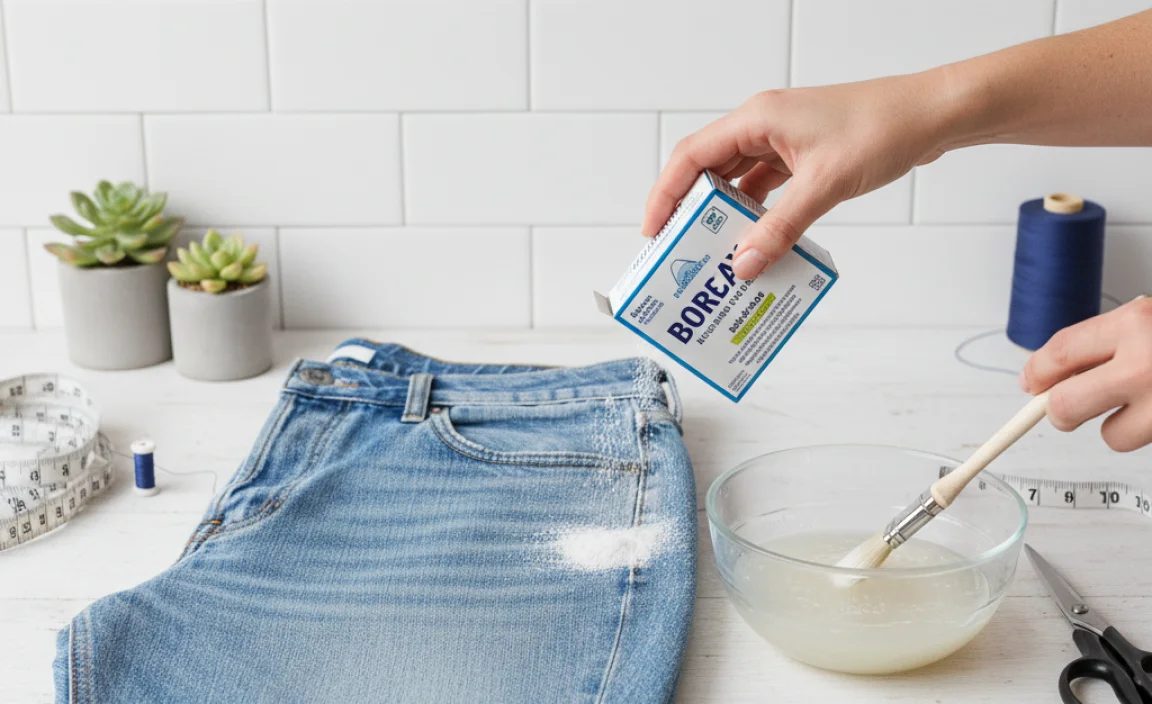
Let’s get straight to it. Follow these steps carefully, and you’ll have perfectly hemmed dad jeans in no time.
Step 1: Prepare Your Borax Solution
This is the unique part of our method. In a clean basin or sink, mix warm water with a tablespoon or two of Borax. Stir until the Borax is mostly dissolved. The goal isn’t to make a strong chemical solution, but a mild one to help prepare the fabric. You want enough water to fully submerge the hem area of your jeans.
Step 2: Pre-Soak the Hem Area
Turn your dad jeans inside out. Place the bottom of the legs, where you intend to make the hem, into the Borax solution. Let this area soak for about 15-20 minutes. This step is believed to help relax the denim fibers and prepare them for a clean fold and stitch. Don’t over-soak, as we’re not aiming to alter the fabric’s integrity, just to give it a gentle preparation.
Step 3: Rinse and Dry
After the soak, thoroughly rinse the hemmed area with clean water to remove any residue from the Borax. Gently squeeze out excess water. It’s best to air dry the jeans at this stage, or at least ensure the hem area is mostly dry before proceeding to the measuring phase. You can hang them or lay them flat.
Step 4: Measure and Mark Your Desired Length
Once the hem area is dry or slightly damp, it’s time to measure. Try on your dad jeans. Stand in front of a mirror and decide on the exact length you want. Use a measuring tape to determine how much you need to cut off. Account for the hem allowance: for a standard hem, you’ll typically want to fold up at least one inch, and for a double fold, two inches. Mark this desired final length line on the inside of the jean leg with fabric chalk or a marker. Then, mark your cutting line about 1/2 inch below the desired final length, or at your double-fold line, depending on your chosen hem style.
Tip: Always measure from the crotch seam down to ensure consistent length on both legs when trying them on. It’s also helpful to have someone else mark or pin for you to get a perfectly straight line.
Step 5: Cut Off the Excess Fabric
Take your jeans off and lay them flat on a clean surface. Using your sharp fabric scissors, carefully cut along the cutting line you marked. Ensure the cut is straight and even all the way around each leg. Remember, you can always cut more off, but you can’t add it back! It’s better to cut slightly longer than you think you need at this stage.
Step 6: Create the First Fold (Hem Allowance)
Now, turn the jeans inside out again if you haven’t already. Take the cut edge and fold it upwards towards the inside of the jean leg, aligning it with your marked desired final length line. This is your first fold. Press this fold firmly with your iron to create a crisp crease. This fold should be about 1/2 inch to 1 inch, depending on how much you measured in Step 4 for your hem allowance.
Step 7: Create the Second Fold (Double Fold Hem)
For a clean, professional finish that prevents fraying, a double fold is recommended. Take the already folded edge and fold it upwards again. This second fold should encompass the raw edge of the fabric. The goal is to hide the raw edge completely within the fold. The width of this second fold will depend on how much fabric you left after cutting. Aim for a total hem width (from the original cut edge to the final folded edge) of about 1 to 1.5 inches total. Press this second fold very firmly with your iron. A good crease here is key to a neat hem.
Understanding Hem Types:
| Hem Type | Description | Best For |
|---|---|---|
| Single Fold Hem | The raw edge is folded up once and stitched. It’s simpler but can fray over time. | Casual projects, or when using fabric that doesn’t fray easily. |
| Double Fold Hem | The raw edge is folded up twice, hiding it completely. This is very durable and neat. | Jeans, trousers, and outerwear where durability and a clean finish are important. |
| Rolled Hem | The fabric is rolled very tightly and stitched. Often seen on delicate fabrics. | Lightweight fabrics like silk, chiffon, or for very narrow hems on casual wear. |
| Cuffed Hem | The hem is folded up and pressed to resemble a cuff. | Casual pants and shorts, often for a stylistic effect. Dad jeans might be styled this way. |
Step 8: Pin the Hem in Place
Once you have your double fold creased and pressed, use pins to secure the hem along the entire length. Place pins about every 1-2 inches, ensuring they go through all layers of fabric and are perpendicular to the folded edge. This will prevent the hem from shifting while you sew.
Step 9: Sew the Hem
Using a Sewing Machine (Recommended): Thread your sewing machine with matching or contrasting thread. Set your machine to a straight stitch and a medium stitch length (around 2.5mm). Start sewing just below the top folded edge of your hem, all the way around the leg, about 1/8 inch from the edge. Backstitch at the beginning and end of each seam for added security. Sew slowly and steadily, keeping the fabric flat and guiding it smoothly. When you reach the starting point, backstitch again to secure the seam.
By Hand (If No Machine): Use a double strand of thread and a needle. A suitable stitch for hemming jeans is the blind hem stitch (also called a ladder stitch) for a nearly invisible finish, or a sturdy backstitch for more visible durability. If using a backstitch, aim to make small, even stitches about 1/8 inch from the top folded edge, keeping your stitches consistent and strong. Stitch all the way around, and knot securely at the end.
Tip for Denim: Using a denim needle for your sewing machine is highly recommended for piercing through the thick layers of denim without breaking. A Universal needle can work in a pinch, but a denim needle offers better performance and longevity.
Step 10: Finishing Touches
Once you’ve sewn all the way around, remove all the pins. Trim any stray threads. You can give the newly hemmed area another press with your iron to ensure it lies flat. Turn your jeans right-side out, and admire your work!
Alternative Hemming Techniques and Considerations
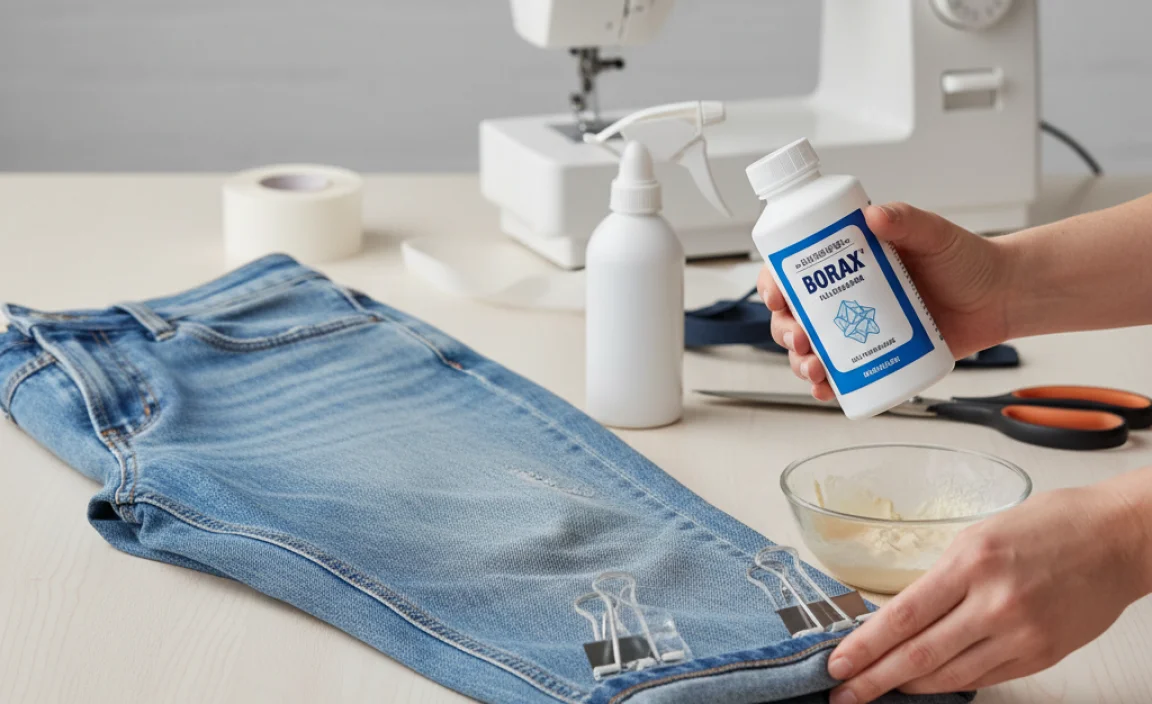
While the Borax method offers a unique preparation step, it’s important to be aware of other hemming techniques that might suit different preferences or skill levels:
- No-Sew Hem Tape: For a quick fix, iron-on hemming tape can bond fabric together without any sewing. It’s fast but usually less durable than stitched hems.
- Hand-Sewn Blind Hem Stitch: As mentioned, this stitch is excellent for a clean, almost invisible hem from the outside. It requires a bit of practice but yields professional results.
- Keeping the Original Hem: For a truly authentic look, some people cut the excess fabric and then reattach the original hem. This preserves the original factory-finished edge and any distressing. This is a more advanced technique.
- Distressed Hem: For a more casual, worn-in look, you can intentionally fray the cut edge after hemming, or skip formal hemming altogether and allow the jeans to fray naturally over time.
Troubleshooting Common Hemming Issues
Even with the best intentions, you might encounter a few hiccups. Here’s how to handle them:
- Uneven Hem: If your hem isn’t straight after sewing, it’s often due to uneven cutting or stretching during the sewing process. Try to be extra mindful of keeping the fabric flat and guided evenly. If it’s slightly off, you might be able to carefully unpick and re-sew, or strategically adjust its position. Sometimes, a perfectly creased fold can mask minor imperfections.
- Stitches Puckering: This can happen if your tension is too tight, your needle is dull, or you’re sewing too fast. Check your machine’s tension settings, use a sharp needle (preferably a denim or sharp needle), and sew at a moderate pace.
- Hem Folding Inward Unevenly: This is where pressing is crucial. Take your time to get a sharp crease on both folds before pinning and sewing. If one side folds more than the other, carefully re-press and re-pin.
- Thread Breaking: Ensure you are using a needle appropriate for denim. A dull or incorrect needle can snag or break the thread, or even damage your machine.
Maintaining Your Hemmed Jeans
Once your dad jeans are perfectly hemmed, proper care will keep them looking great. Always follow the care label instructions on your jeans. Generally, washing them inside out in cold water on a gentle cycle can help preserve the color and fabric. Air drying is ideal for maintaining the shape and longevity of denim. If you need to machine dry, use a low heat setting. Avoid over-drying, which can shrink or damage fibers.
Frequently Asked Questions about Hemming Dad Jeans
Q1: Do I really need to use Borax?
A1: The Borax method is optional. It’s a pre-treatment step believed by some to help prepare the denim fibers for a cleaner fold and crisper crease. Many people successfully hem jeans without it. You can achieve excellent results by simply following the measuring, folding, pressing, and sewing steps carefully.
Q2: How much fabric should I leave for the hem allowance?
A2: For a standard double-fold hem on jeans, it’s best to leave at least 1 inch to 1.5 inches of fabric after your desired finished length is marked. This allows for a neat double fold that completely conceals the raw edge.
Q3: What is the best stitch to use for hemming jeans?
A3: A straight stitch on a sewing machine is most common and provides durability. For a cleaner, more professional look on the outside, a blind hem stitch is excellent when sewn by machine or hand. A simple, strong backstitch is also effective if done carefully by hand.
Q4: Can I hem jeans without a sewing machine?
A4: Absolutely! While a sewing machine makes the process quicker and can create a very durable stitch, hand-sewing is perfectly effective. A strong backstitch or a saddle stitch done with sturdy thread can create a robust and neat hem.
Q5: My jeans are very thick denim. What needle should I use?
A5: For thick denim, a denim needle (also called a jeans needle) is highly recommended. These needles are stronger and sharper, designed to penetrate multiple layers of tough fabric like denim without skipping stitches or breaking.
Q6: How do I ensure the hem is the same length on both legs?
A6: The best way is to try the jeans on and have someone else mark the length for you, or measure carefully from the crotch seam down on each leg. Pinning one leg to your desired length, then using that as a guide to measure and mark the second leg is also a reliable method.
Conclusion
Hemming your own dad jeans might seem like a daunting task, but with a clear understanding of the process and a few essential tools, it’s entirely achievable. The Borax method, while simple, offers a unique approach to preparing your denim for a cleaner fold. Even without it, precise measuring, sharp pressing, and careful stitching—whether by hand or machine—are the keys to a professional-looking result. By following these step-by-step instructions, you can transform ill-fitting jeans into your perfectly tailored favorites, giving you confidence and comfort in every wear. So, grab your jeans, your tools, and enjoy the satisfaction of a perfectly hemmed pair!


